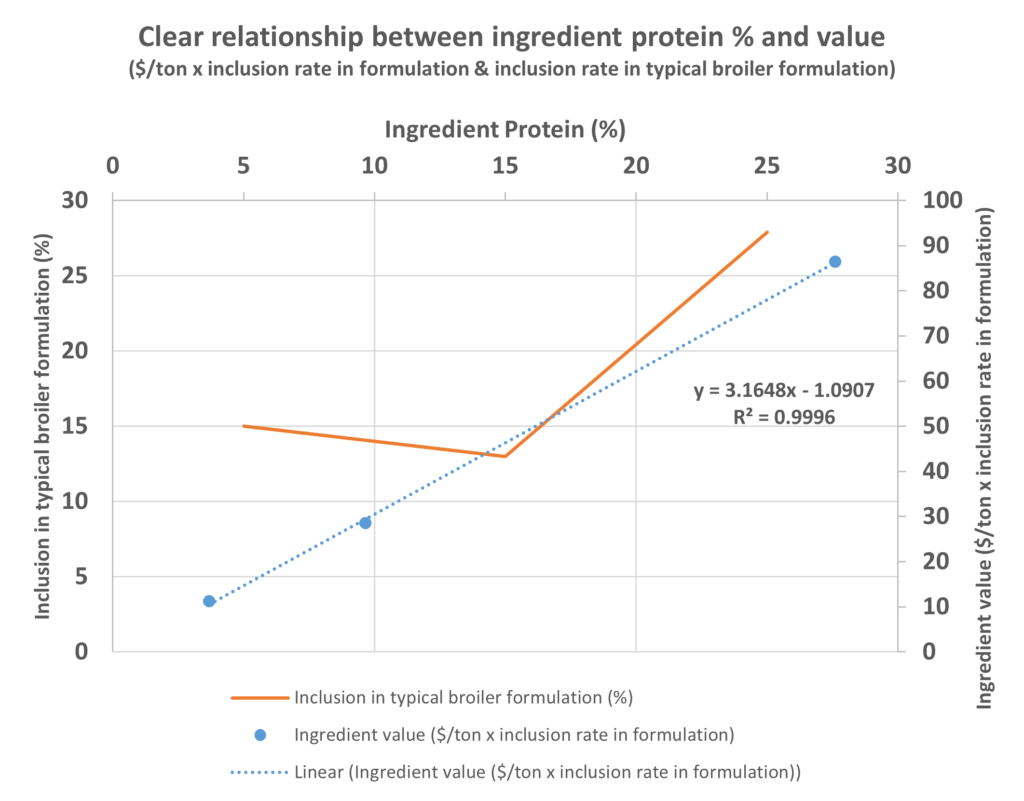Protein: Value Driver For Ingredients

We often get asked about ingredient value: What makes an ingredient worth more? How do you get more of what you’re making into a formulation?
Given that high-shear dry extrusion is a process that can result in commercial sterility of ingredients, we are tasked with putting together blends of co-products to make new, higher-quality dry extruded ingredients. As such, the blending proportions can be altered to construct new ingredients with varied compositions.
I worked on one such project where above-average-quality excess human food was blended with either wheat midds or soy meal. The blends varied to include different levels of protein in the final extruded ingredients that would be sold for poultry feed. Since we had information on the blends, nutrient compositions and could insert these new ingredients into a least-cost formulation program, we were able to determine the effect of protein (and amino acid) contents on the values and inclusion rates of these ingredients. What we found is shown in the graph below:

First, it’s abundantly clear a relationship exists between ingredient protein percentage and the ingredient value (in this case, considering $/ton and inclusion rate in a typical broiler diet formulation.) It’s essentially a straight line and looking at the slope tells us that each 1% increase in protein content of the new ingredient results in an increase of about $3.16/ton of the broiler diet. This amount represents a few percentage units of the total price tag of the diet, and the range in ingredient prices I could get, using a least-cost formulation program, varied from $75 to $310/ton.
Secondly, we can clearly see that the inclusion rate in the broiler diet increases drastically as the protein content of a new ingredient increases and reaches a certain point. In this situation, we achieved more protein in our new ingredient by increasing the amount of soy meal, and at the highest level, the least-cost formulation program included the new ingredient at 27% of the diet.
Let’s summarize what this exercise tells us about defining value of ingredients:
- Including more protein in an ingredient reliably increases its value
- Beyond a certain level of ingredient protein, a least-cost formulation program will include much more of this higher-protein ingredient, and this ingredient will be able to fetch a higher price in the marketplace
Not shown on the graph is that the quality of the protein affects this as well. The ingredient with the highest value (both ingredient $/ton and percentage of inclusion with the least-cost formulation program) is the one with the greatest amount of soy meal. Properly processed soy meals are known to be very high-quality and are used extensively in feeding programs.
Don’t give away any value – know what your products are worth. Protein is only one source of value – energy, fats and oil, calcium, and phosphorus are other important considerations, to name a few. Contact us to learn how to get all you can from your ingredients.



